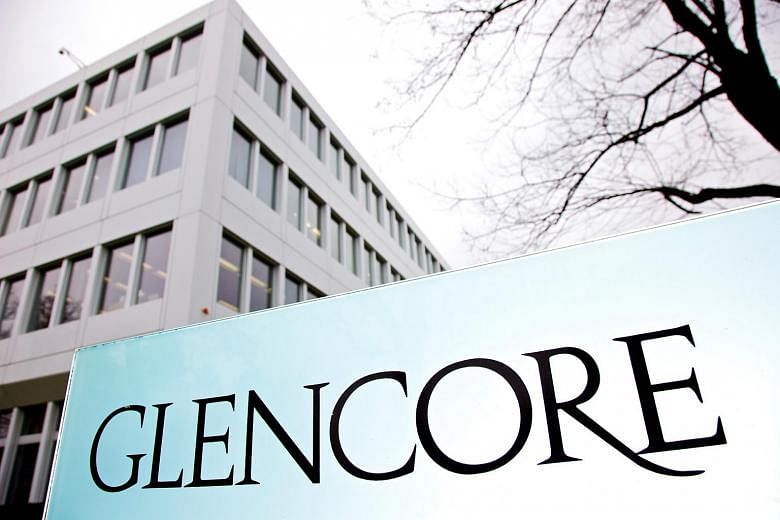NEW YORK (BLOOMBERG) - Glencore just gave credit traders another reason to reach for the antacid.
Fears that the commodities house won't be able to get a grip on its US$30 billion debt load triggered a worldwide selloff on Monday (Sept 28), sending junk-bond yields over 8 per cent for the first time in three years, Bank of America Merrill Lynch index data show.
The concern is tied to the reduced demand for metals and minerals from China amid the country's economic slowdown. The panic on Monday was also partially fueled by a warning from investment bank Investec that Glencore and mining company Anglo American could be severely devalued if low commodities prices persist. Maintaining an investment-grade rating is particularly important for Glencore because the company's large trading operation needs it to continue borrowing at attractive rates.
"The market is on edge, and the bad news keeps coming," said Margie Patel, a money manager for Wells Capital Management in Boston, which oversees US$351 billion. "When you have this much bad news and you aren't near any inflection point to speak of, it just begets more sellers, even when prices are low."
The rout was so fierce that traders started demanding more to insure against a Glencore default by the end of next year than for five years of protection - a debt-market distortion that typically happens when companies are deemed in distress. And Anglo American bonds, which have an investment-grade credit rating, were suddenly being treated like they were junk.
The anxiety infected almost every part of the junk-bond market and effectively brought issuance of new debt to a halt. Among investment-grade companies, just US$1.7 billion worth of debt was issued, compared with US$18.9 billion a week earlier. And at least two firms postponed bond sales.
The strains felt in debt markets are still a far cry from the worst of the last two big financial crises in 2011 and 2008. A US gauge of credit risk, the Markit CDX index tied to investment-grade companies, was still well below the levels reached then. And there's little sign that the concerns are spreading to banks.
But in some corners of the market, the signals are increasingly worrying.
The turmoil underscores the lengths to which yield-starved debt investors staked their fortunes to the commodities boom. As miners and oil producers sought cheap capital to fund their expansions, more than US$262 billion of bonds worldwide were issued from junk-rated miners and energy companies during the past four years.
Now, with commodities prices slumping to their lowest level in more than 16 years, the riskiest borrowers are struggling to refinance. With higher-rated mining companies like Glencore, Anglo American and Freeport-McMoRan, investors are becoming increasingly concerned that the stress won't be contained to the junk market.
"When you look at the fundamentals it's going to be harder and harder for some of these companies to keep their investment- grade ratings," Patel said. "We should see more downgrades, and that is putting pressure on the market."
Investors have already started treating Glencore's debt as if it's junk, demanding upfront payments for first time since 2009 and pricing in a more than 50 per cent chance that the Swiss company will default. The firm has US$30 billion of net debt.
"The contagion from the commodities slump that we feared earlier in the year is starting to play out," said Matthew Mish, a senior credit strategist at UBS in New York. "You have this virtuous cycle turning into a vicious circle."
In addition, the timing of the warning about Glencore and Anglo American couldn't have been worse, with worries of a pending interest-rate increase by the Fed and the reduced economic activity by China reaching a crescendo.
"This is really starting to feel like the 2011 Euro bank crisis," said John McClain, a portfolio manager at Diamond Hill Capital Management Inc., which oversees about US$17 billion. "The theme seems to be the market is looking for reasons to go lower."

